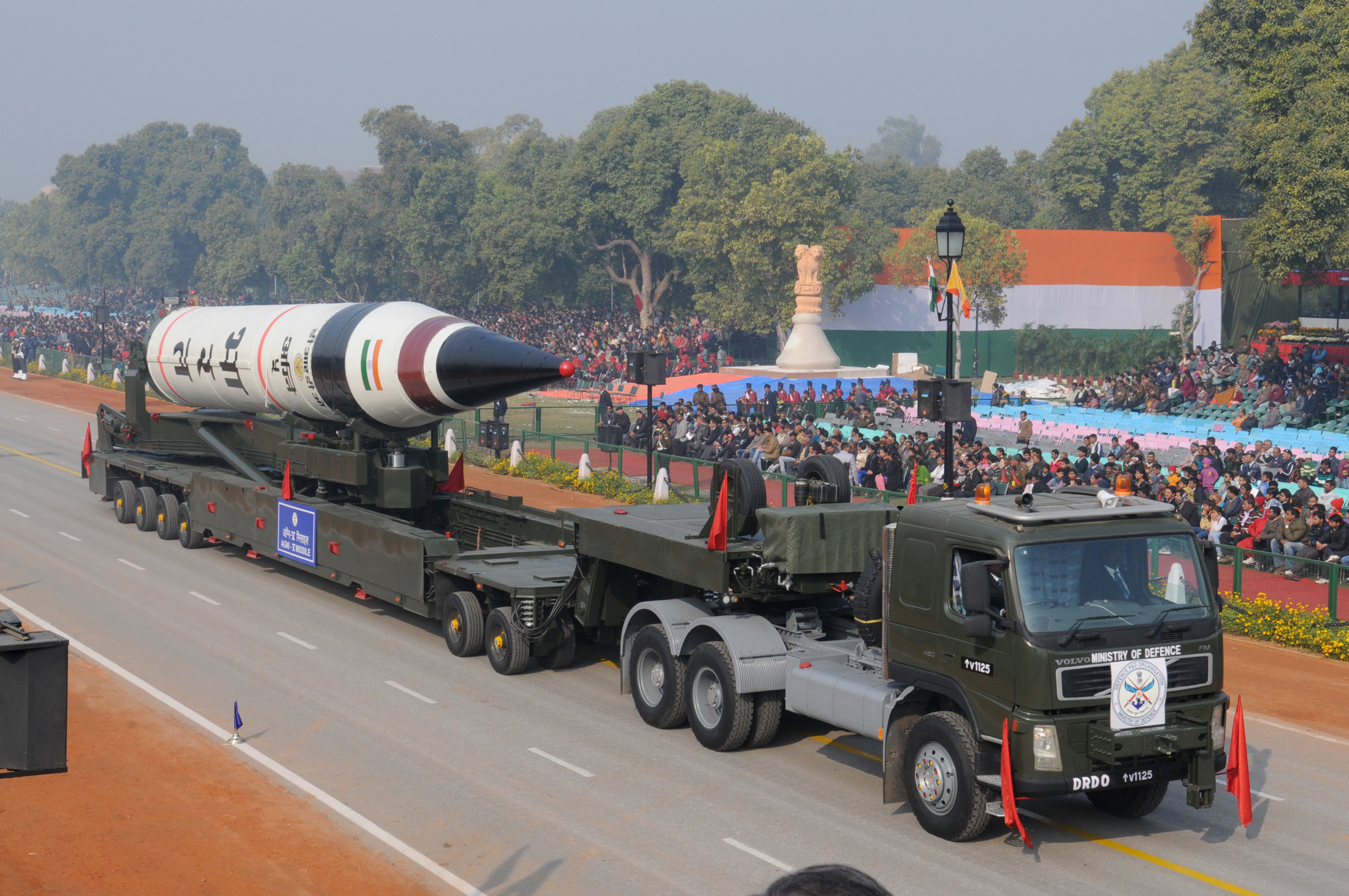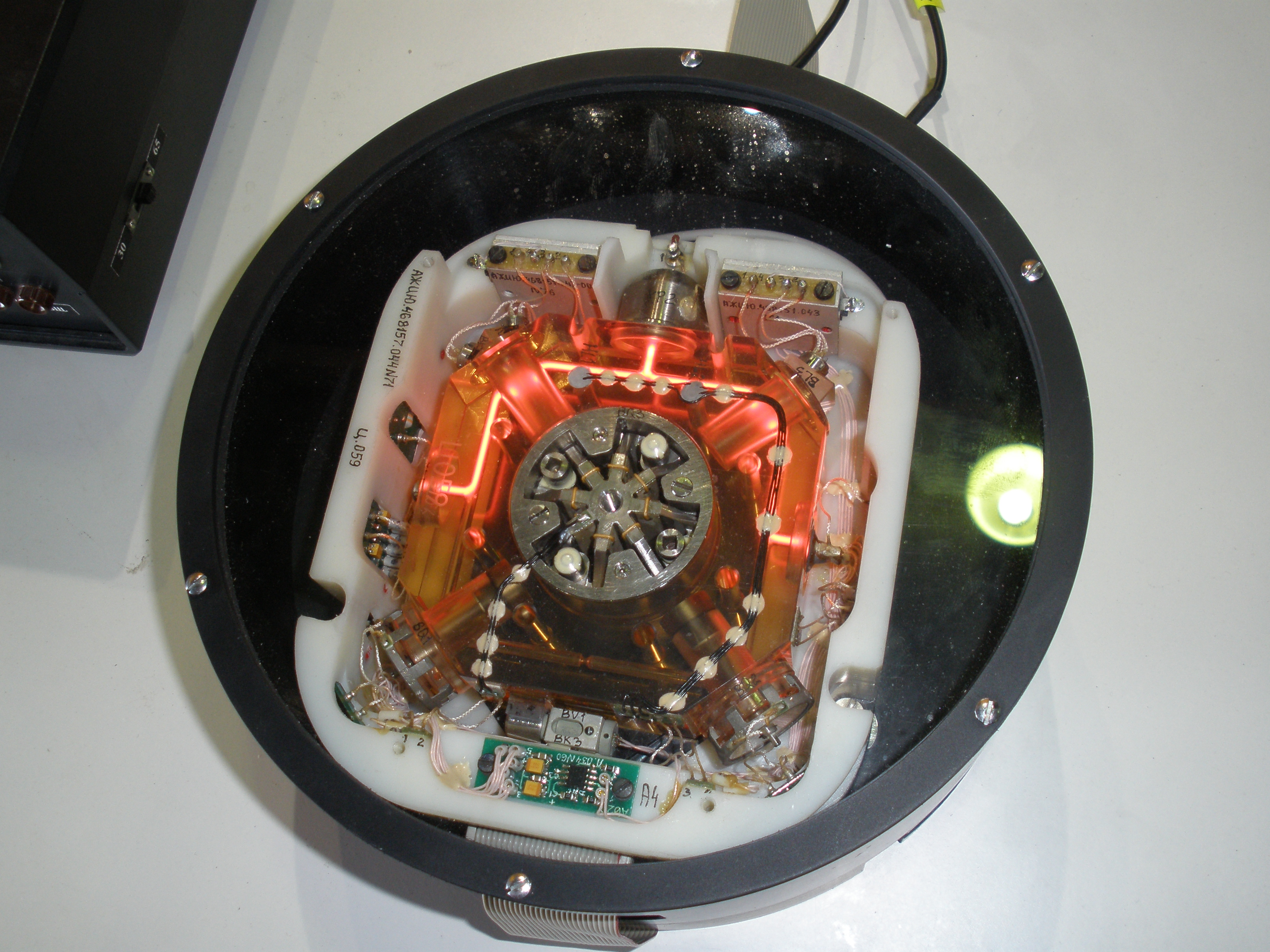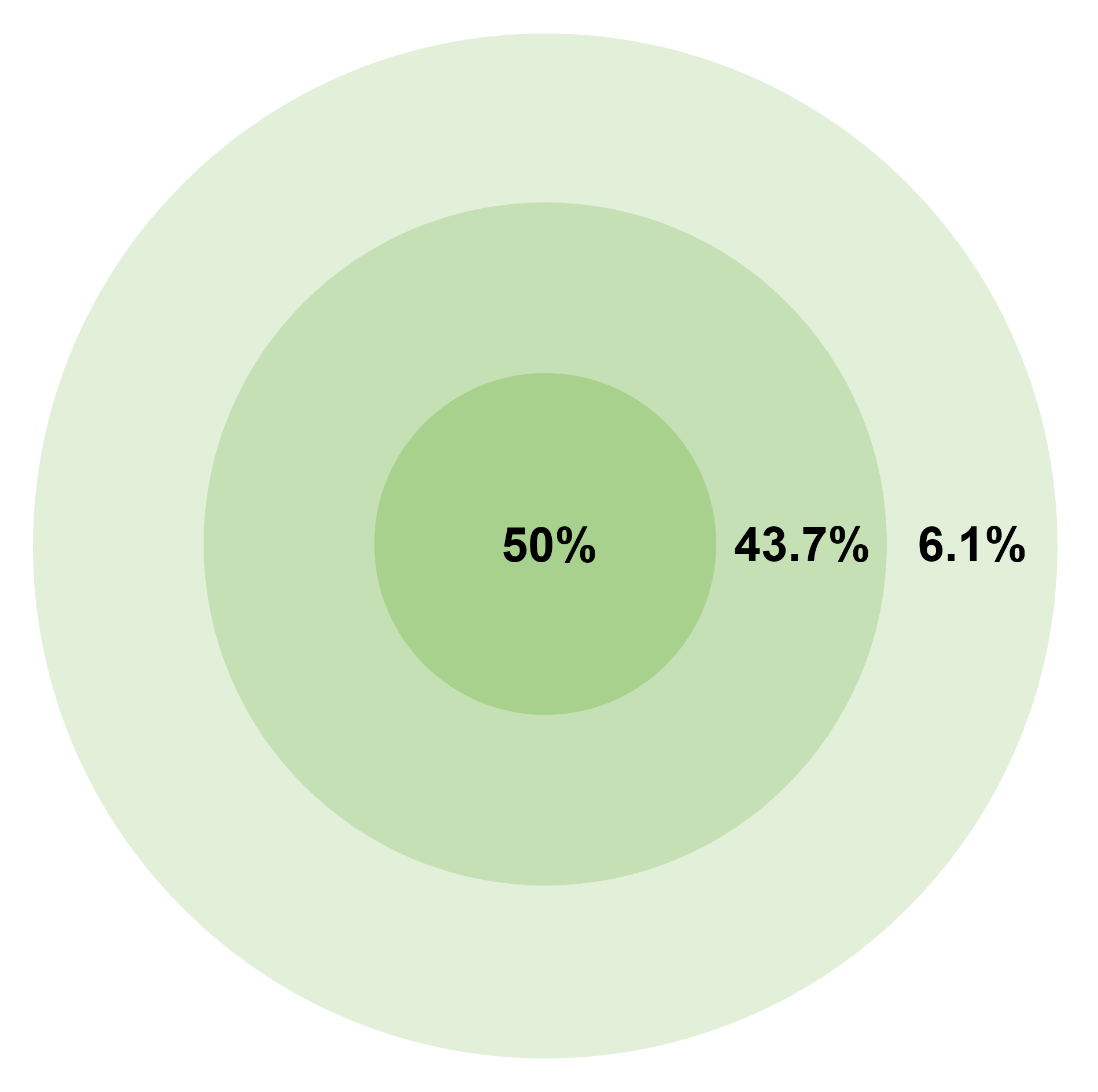|
Agni-I
Agni-I (Agni ''"Fire"'') is a medium-range ballistic missile that was developed by DRDO of India in the Integrated Guided Missile Development Program. It is a single-stage missile that was developed after the Kargil War to fill the gap between the range of the Prithvi (missile)#Prithvi II, Prithvi-II missile and the range of the Agni-II. It was first launched from a road mobile launcher at Integrated Test Range (ITR), Wheeler Island, India, Wheeler Island, on 25 January 2002. Less than 75 launchers are deployed. History and development Agni-I was first tested at the Interim Test Range in Chandipur, Orissa, Chandipur at 7:17AM on 22 May 1989, and is capable of carrying a conventional payload of 1,000 kg (2,200 lb) or a nuclear weapon, nuclear warhead. Agni missiles consist of one (short range) or two multistage rocket, stages (intermediate range). These are rail and road mobile and powered by solid rocket fuel, propellants. The Agni I has a range of 700–1,200 km ... [...More Info...] [...Related Items...] OR: [Wikipedia] [Google] [Baidu] |
Agni-II
Agni-II ( IAST: Agni, ), is the second strategic ballistic missile of Agni (missile) family envisaged to be the mainstay of the Indian missile-based strategic nuclear deterrence. The Agni-II is a medium-range ballistic missile (MRBM) with two solid fuel stages and a Post Boost Vehicle (PBV) integrated into the missile's Re-entry Vehicle (RV). The Agni's manoeuvring RV is made of a carbon-carbon composite material that is light and able to sustain high thermal stresses of re-entry, in a variety of trajectories. The Agni-IIA is a more advanced version of Agni-II, albeit with more sophisticated and lighter materials, yielding a better range and operating regime. Agni-IIA was later renamed as Agni-IV plugging the gap between Agni-II and Agni-III. While the first test of Agni-IV in December 2010 was a failure, the second test flight in November 2011 was a success Agni-II, developed as part of medium- and long-range Agni series of missile systems, has already been inducted into the Ar ... [...More Info...] [...Related Items...] OR: [Wikipedia] [Google] [Baidu] |
Strategic Forces Command
The Strategic Forces Command (SFC), sometimes called Strategic Nuclear Command, forms part of India's Nuclear Command Authority (NCA). It is responsible for the management and administration of the country's tactical and strategic nuclear weapons stockpile. It was created on 4 January 2003 by the Vajpayee Government. Air Marshal Teja Mohan Asthana became its first commander-in-chief. Responsibility It is the responsibility of the Strategic Forces Command to operationalize the directives of the NCA under the leadership of a Commander-in-Chief who is a three-star rank officer. It will have the sole responsibility of initiating the process of delivering nuclear weapons and warheads, after acquiring explicit approval from the NCA. The exact selection of the target area shall be decided by the SFC through a calibrated, cumulative process involving various levels of decision-making, and with formal approval by the NCA. The SFC manages and administers all strategic forces by exer ... [...More Info...] [...Related Items...] OR: [Wikipedia] [Google] [Baidu] |
Ring Laser Gyro
A ring laser gyroscope (RLG) consists of a ring laser having two independent counter-propagating resonant modes over the same path; the difference in phase is used to detect rotation. It operates on the principle of the Sagnac effect which shifts the nulls of the internal standing wave pattern in response to angular rotation. Interference between the counter-propagating beams, observed externally, results in motion of the standing wave pattern, and thus indicates rotation. Description The first experimental ring laser gyroscope was demonstrated in the US by Macek and Davis in 1963. Various organizations worldwide subsequently developed ring-laser technology further. Many tens of thousands of RLGs are operating in inertial navigation systems and have established high accuracy, with better than 0.01°/hour bias uncertainty, and mean time between failures in excess of 60,000 hours. Ring laser gyroscopes can be used as the stable elements (for one degree of freedom each) in an ine ... [...More Info...] [...Related Items...] OR: [Wikipedia] [Google] [Baidu] |
Wheeler Island, India
__NOTOC__ Dr. Abdul Kalam Island, formerly known as Wheeler Island, is an island off the coast of Odisha, India, approximately east of the state capital Bhubaneswar. The island was originally named after English commandant Lieutenant Hugh Wheeler. On 4 September 2015, the island was renamed to honour the late Indian president, Dr. A. P. J. Abdul Kalam. The Integrated Test Range missile testing facility is located on the island, and serves as the test facility for most of India's missiles such as the Akash, Agni, Astra, BrahMos, Nirbhay, Prahaar, Prithvi, Shaurya Missile, Advanced Air Defence, Prithvi Air Defence, and ASAT missiles. Geography Abdul Kalam Island is one among a group of five islands located in the Bay of Bengal, approximately off the eastern coast of India, and about south of Chandipur in Balasore district, Odisha. The island is about in length and in area. The nearest port is Dhamra Port. This island belongs to Bhadrak district. Integrated Test Ra ... [...More Info...] [...Related Items...] OR: [Wikipedia] [Google] [Baidu] |
Medium-range Ballistic Missile
A medium-range ballistic missile (MRBM) is a type of ballistic missile with medium range, this last classification depending on the standards of certain organizations. Within the U.S. Department of Defense, a medium-range missile is defined by having a maximum range of between . In modern terminology, MRBMs are part of the wider grouping of theatre ballistic missiles, which includes any ballistic missile with a range of less than . Specific MRBMs * DF-2 * DF-16 * DF-17 * DF-21 (China) , (Saudi Arabia) * SSBS S1 * Agni II * Agni-P * Ashoura * Emad * Fajr-3 (estimation) * Ghadr-110 * Khorramshahr (missile) * Sejjil * Shahab-3 * Badr-2000 * Jericho II * Hwasong-9 * Hwasong-10/RD-B Musudan * Pukkuksong-1 * Pukkuksong-2 * Pukkuksong-2 * Rodong-1 * Ababeel * Ghauri-I * Ghauri-II * Ghauri-III (Cancelled) * Shaheen-II * Shaheen-III [...More Info...] [...Related Items...] OR: [Wikipedia] [Google] [Baidu] |
Bharat Dynamics Limited
Bharat Dynamics Limited (BDL) is one of India's manufacturers of ammunitions and missile systems. It was founded in 1970 in Hyderabad, Telangana, India. BDL was established to be a manufacturing base for guided weapon systems and begun with a pool of engineers drawn from Indian Ordnance Factories, DRDO and aerospace industries, It began by producing a first generation anti-tank guided missile - the French SS11B1. This product was a culmination of a licence agreement the Government of India entered into with Aerospatiale. BDL has three manufacturing units, located at Kanchanbagh, Hyderabad, Telangana; Bhanur, Medak district, Telangana and Visakhapatnam, Andhra Pradesh. Two new units are planned at Ibrahimpatnam, Ranga Reddy district, Telangana and Amravati, Maharashtra. History India began to develop indigenous missiles through the Integrated Guided Missile Development Programme (IGMDP), which gave BDL an opportunity to be closely involved with the programme wherein it was ide ... [...More Info...] [...Related Items...] OR: [Wikipedia] [Google] [Baidu] |
Circular Error Probable
In the military science of ballistics, circular error probable (CEP) (also circular error probability or circle of equal probability) is a measure of a weapon system's precision. It is defined as the radius of a circle, centered on the mean, whose perimeter is expected to include the landing points of 50% of the rounds; said otherwise, it is the median error radius. That is, if a given munitions design has a CEP of 100 m, when 100 munitions are targeted at the same point, 50 will fall within a circle with a radius of 100 m around their average impact point. (The distance between the target point and the average impact point is referred to as bias.) There are associated concepts, such as the DRMS (distance root mean square), which is the square root of the average squared distance error, and R95, which is the radius of the circle where 95% of the values would fall in. The concept of CEP also plays a role when measuring the accuracy of a position obtained by a navigati ... [...More Info...] [...Related Items...] OR: [Wikipedia] [Google] [Baidu] |
Tatra (company)
Tatra is a Czech vehicle manufacturer from Kopřivnice. It is owned by the ''Tatra Trucks'' company, and it is the third oldest company in the world producing cars with an unbroken history. The company was founded in 1850 as ''Ignatz Schustala & Cie'', in 1890 renamed in German ''Nesselsdorfer Wagenbau-Fabriksgesellschaft'' when it became a wagon and carriage manufacturer. In 1897, Tatra produced the first motor car in central Europe, the Präsident automobile. In 1918, it changed its name to ''Kopřivnická vozovka a.s.'', and in 1919 it changed from the Nesselsdorfer marque to the ''Tatra'' badge, named after the nearby Tatra Mountains on the Czechoslovak-Polish border (now on the Polish- Slovak border). During World War II Tatra was instrumental in the production of trucks and tank engines for the German war effort. Production of passenger cars ceased in 1999, but the company still produces a range of primarily all-wheel-drive trucks, from 4×4 to 18×18. The brand is also ... [...More Info...] [...Related Items...] OR: [Wikipedia] [Google] [Baidu] |
Transporter Erector Launcher
A transporter erector launcher (TEL) is a missile vehicle with an integrated tractor unit that can carry, elevate to firing position and launch one or more missiles. History Such vehicles exist for both surface-to-air missiles and surface-to-surface missiles. Early on, such missiles were launched from fixed sites and had to be loaded onto trucks for transport, making them more vulnerable to attack, since once they were spotted by the enemy they could not easily be relocated, and if they were it often took hours or even days to prepare them for launch once they reached their new site. Usually a number of TELs and TELARs are linked to one command post vehicle (CP or CPV). They may use target information from target acquisition, designation and guidance radar (TADAGR or TAR). Transporter erector launcher and radar A transporter erector launcher and radar (TELAR) is a type of TEL that also incorporates part or all of the radar system necessary for firing the surface-to-air missil ... [...More Info...] [...Related Items...] OR: [Wikipedia] [Google] [Baidu] |
Agni
Agni (English: , sa, अग्नि, translit=Agni) is a Sanskrit word meaning fire and connotes the Vedic fire deity of Hinduism. He is also the guardian deity of the southeast direction and is typically found in southeast corners of Hindu temples. In the classical cosmology of the Indian religions, Agni as fire is one of the five inert impermanent elements ('' pañcabhūtá'') along with space (''ākāśa''), water (''ap''), air (''vāyu'') and earth (''pṛthvī''), the five combining to form the empirically perceived material existence (''Prakṛti''). In Vedic literature, Agni is a major and oft-invoked god along with Indra and Soma. Agni is considered the mouth of the gods and goddesses and the medium that conveys offerings to them in a ''homa'' (votive ritual). He is conceptualized in ancient Hindu texts to exist at three levels, on earth as fire, in the atmosphere as lightning, and in the sky as the sun. This triple presence accords him as the messenger between the ... [...More Info...] [...Related Items...] OR: [Wikipedia] [Google] [Baidu] |
India
India, officially the Republic of India (Hindi: ), is a country in South Asia. It is the seventh-largest country by area, the second-most populous country, and the most populous democracy in the world. Bounded by the Indian Ocean on the south, the Arabian Sea on the southwest, and the Bay of Bengal on the southeast, it shares land borders with Pakistan to the west; China, Nepal, and Bhutan to the north; and Bangladesh and Myanmar to the east. In the Indian Ocean, India is in the vicinity of Sri Lanka and the Maldives; its Andaman and Nicobar Islands share a maritime border with Thailand, Myanmar, and Indonesia. Modern humans arrived on the Indian subcontinent from Africa no later than 55,000 years ago., "Y-Chromosome and Mt-DNA data support the colonization of South Asia by modern humans originating in Africa. ... Coalescence dates for most non-European populations average to between 73–55 ka.", "Modern human beings—''Homo sapiens''—originated in Africa. Then, int ... [...More Info...] [...Related Items...] OR: [Wikipedia] [Google] [Baidu] |
DRDO
The Defence Research and Development Organisation (DRDO) (IAST: ''Raksā Anūsandhān Evam Vikās Sangaṭhan'') is the premier agency under the Department of Defence Research and Development in Ministry of Defence of the Government of India, charged with the military's research and development, headquartered in Delhi, India. It was formed in 1958 by the merger of the Technical Development Establishment and the Directorate of Technical Development and Production of the Indian Ordnance Factories with the Defence Science Organisation. Subsequently, Defence Research & Development Service (DRDS) was constituted in 1979 as a service of Group 'A' Officers / Scientists directly under the administrative control of Ministry of Defence. With a network of 52 laboratories that are engaged in developing defence technologies covering various fields like aeronautics, armaments, electronics, land combat engineering, life sciences, materials, missiles, and naval systems, DRDO is India's largest ... [...More Info...] [...Related Items...] OR: [Wikipedia] [Google] [Baidu] |



_Hindu_puja%2C_yajna%2C_yagna%2C_Havanam_in_progress.jpg)